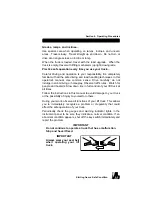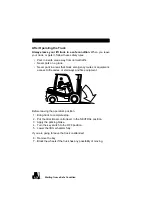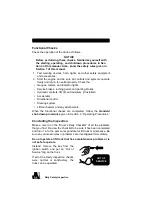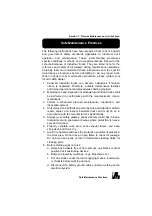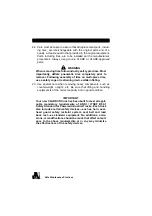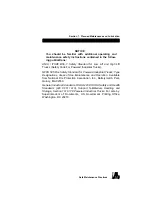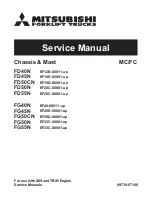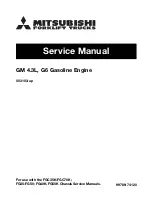
Refueling LPG Tanks
5-7
Section 5. Operator Maintenance and Care
RECOMMENDED SAFETY MAINTENANCE PROCEDURES
FOR LPG FUELED LIFT TRUCKS
WARNING
!
LPG is a combustible fuel that is heavier than air. Escaping gas
may accumulate in low areas. The fuel cylinder should be
mounted so that it does not extend outside the truck and should
also be properly positioned by using the locating pin or key
way.
The fuel valve should be turned off when the machine is not in
service. Cast fittings should not be used in the LPG system. Use only
Underwriters Laboratories or Factory Mutual listed LPG hose
assemblies where pressure fuel lines are required. All pipe threaded
fittings should be installed using an approved sealing compound.
Fuel lines should be supported by clamps to minimize chafing and
wear. The LPG solenoid valve should be wired to an automatic shut
off switch (oil pressure or vacuum) to prevent leakage of gas in the
event the ignition is on without the engine running. Check the LPG
solenoid or vacuum shutoff valve for leakage as follows:
1. Turn fuel tank valve off, start and run engine until it stops.
2. Install a 0 to 30 psi pressure gauge per instruction A or B:
A. To primary test port of single units consisting of primary and
secondary regulators.
B. Between the primary and secondary stage regulators when
the LPG system consists of two regulators.
3. Turn the tank fuel valve on. The pressure gauge should maintain
a zero reading. If it does not, the solenoid valve or vacuum shut-
off valve must be repaired or replaced. An odor is added to LPG
to help indicate leaks. If you detect gas odor, you should turn off
the fuel tank supply valve and engine. Remove all sources of
ignition, and ventilate the area. Make all of the necessary repairs
before you turn the fuel supply on. The complete LPG system
should be inspected periodically. Check all hoses for wear, con-
nections for leaks, and all parts for damage.
NOTE:
Fuel hoses have a limited life expectancy. They should be
checked for cracking and drying due to age. Hoses with visible signs
of age should be replaced. Use only Underwriters Laboratories or
Factory Mutual listed LPG parts for replacements.
NOTE:
The above information is provided as a guide. Consult the
National Fire Protection Association Pamphlet 58 for the safe
storage and handling of liquefied petroleum gases. Governmental
safety regulations in your locality could vary. Check with the authority
having jurisdiction to be sure that you meet all of their requirements.
Contact the manufacturer for detailed service information.
Summary of Contents for C15 D
Page 2: ......
Page 6: ...iv...
Page 16: ...1 4 Seat Belts Seat Belts ALWAYS BUCKLE UP Seat belts can reduce injuries...
Page 30: ......
Page 88: ...5 8...
Page 107: ...PM Report Form 7 13 Section 7 Planned Maintenance and Lubrication...
Page 124: ...7 30...
Page 142: ......
Page 143: ......

